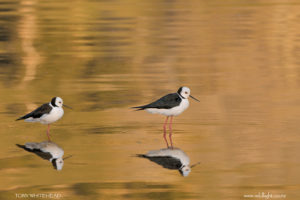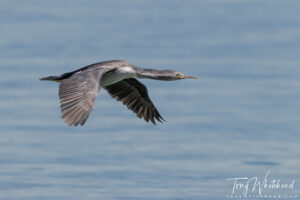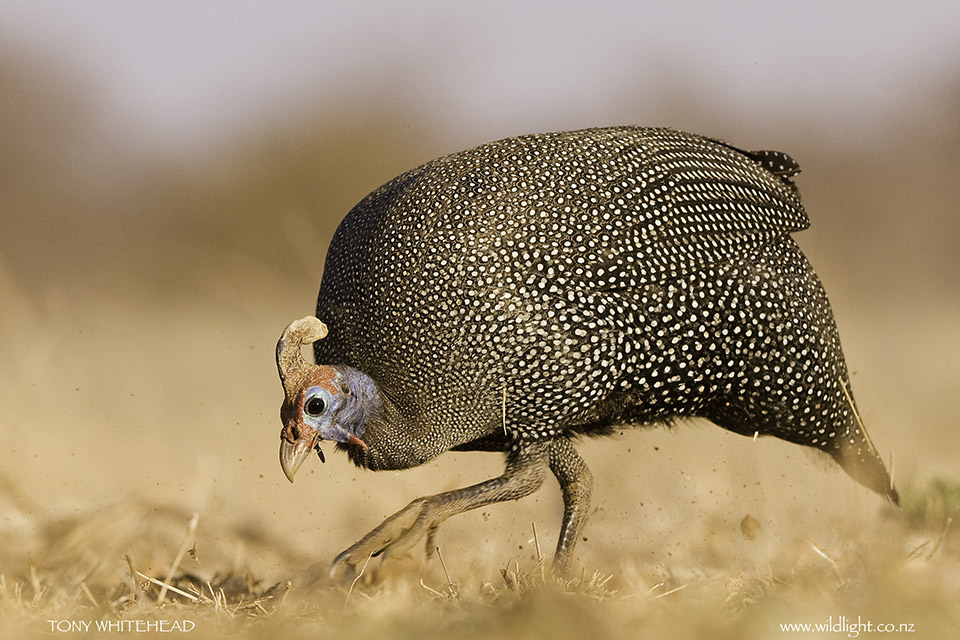
Bird photography has a number of basic “rules”. Leaving “breathing room” around the subject, allowing space for the bird to “move into”, not cutting off “virtual legs” which may be underwater etc.
Getting a low shooting angle for bird photography is one of the common pieces of advice for beginning bird photographers. In reality it only applies if the bird is low – on the ground or on water. A better suggestion would be to try and get to eye level with the bird. It is along the same lines as getting down to eye level when photographing small children or pets as it creates much nicer images than when looking down on small subjects. To get to eye level with birds can mean getting down low and muddy with waterbirds or shorebirds. To get to eye level with perched or flying birds can mean getting higher.
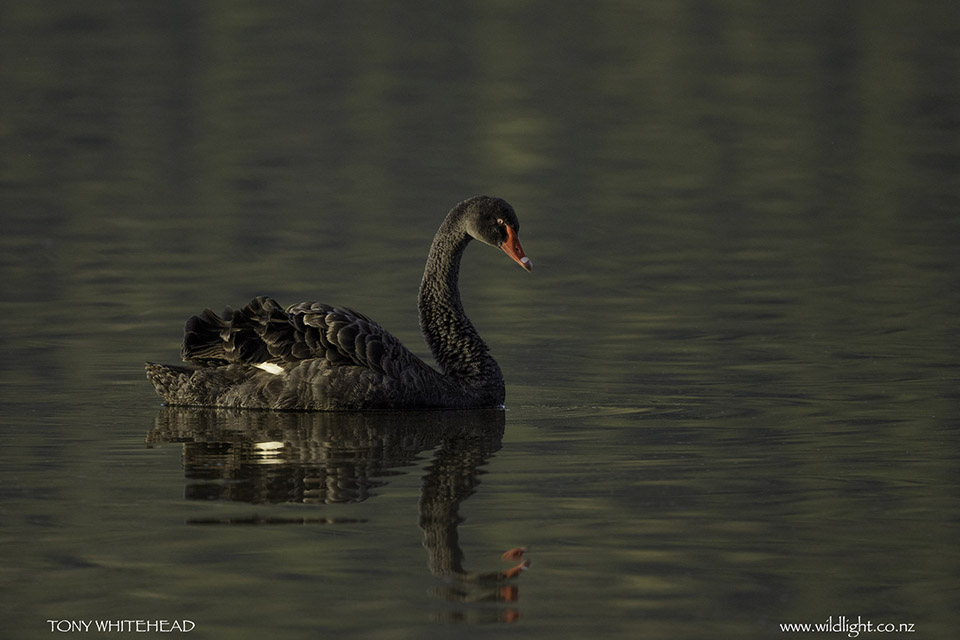
One of the big benefits of getting low for birds on the ground or on water is to achieve a nice smooth background. The further from the plane of focus the background is, the more out of focus it becomes. This gives nice separation of the subject from the background. In the image above of a Black Swan the background is nice and even in colour but the texture of the ripples remains and we are looking down on the swan. A nice enough record image but not something that deserves to be printed or put on a wall.
This next image shows exactly the same bird photographed at water level. The background which is the bush at the far side of the lake is now extremely defocussed and the swan pops out as the only sharp subject in frame.
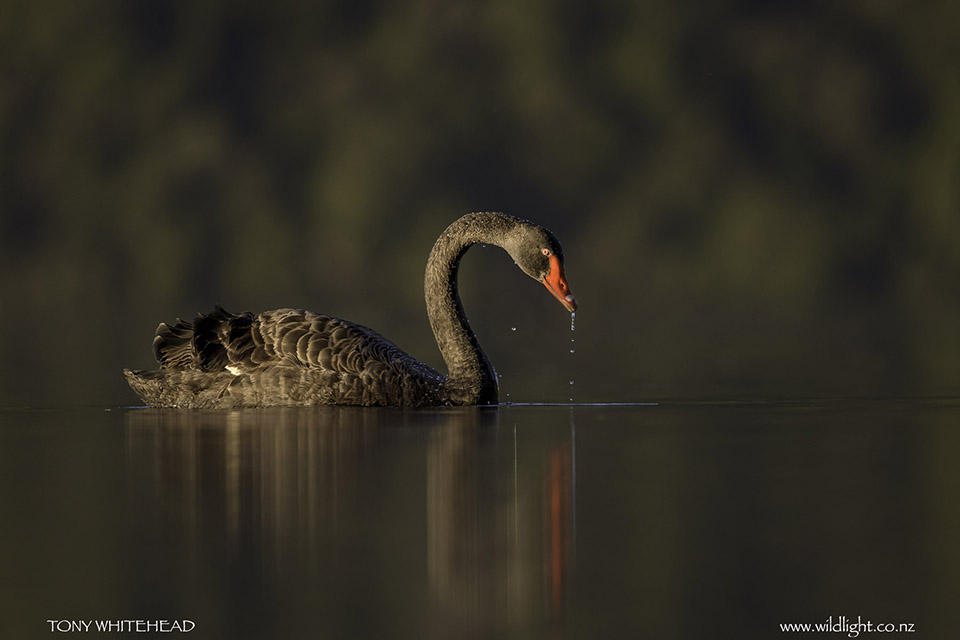
Getting below eye level with a wide angle lens and a larger bird that will tolerate proximity can give a different perspective and accentuate the size of the bird.
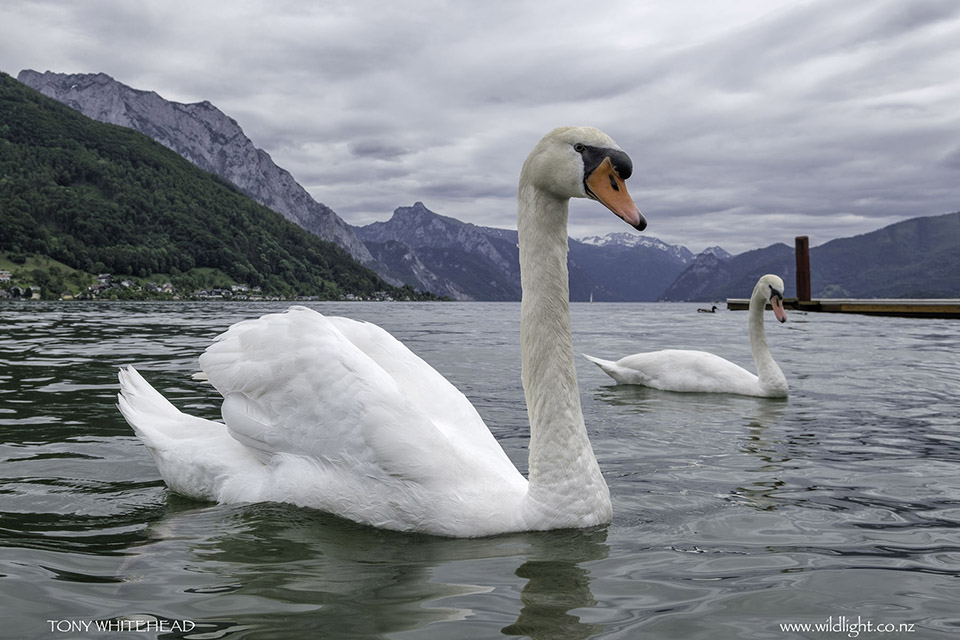
It might seem that getting as low as possible is always the best option but it is important not to lose sight of the reason we want to get low. For me the most important reason is the background. The coot in the next image was photographed from a jetty about 15cm above the water surface. In this situation getting any lower would have brought reeds into the top of the image and given a less even background.
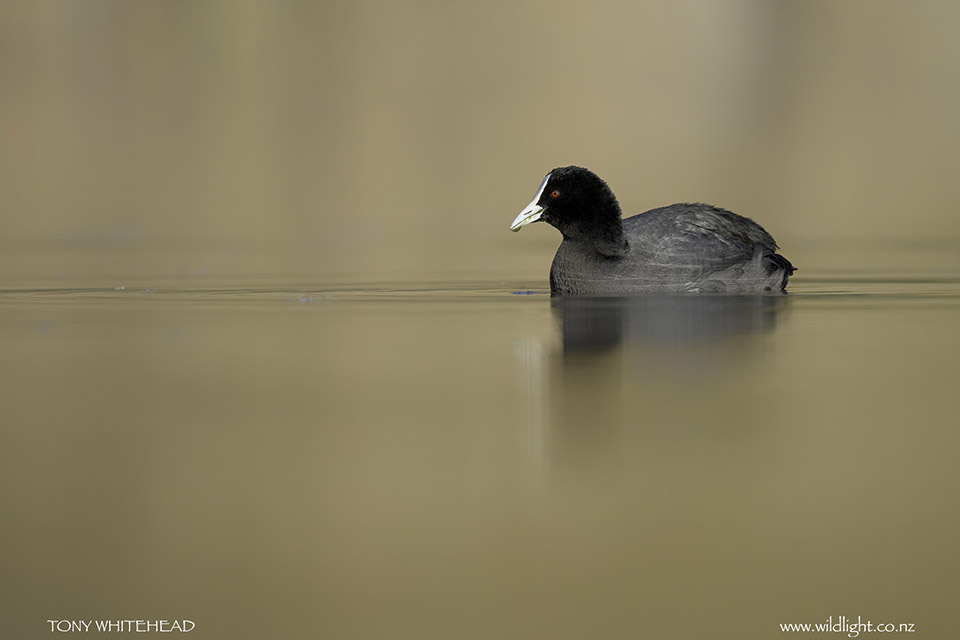
This final image was taken when sitting concealed in reeds at the lake edge. Paradise Ducks are notoriously wary but had approached close to where I was sitting. The dark line at the top is the base of reeds in the water about 40m beyond the ducks. Slumping lower would have made them more prominent in the background so getting a little higher would have given a better background. If I had moved to get higher it would have alerted the ducks to my presence and I would have only had the opportunity to photograph alarmed ducks swimming away from me on a nicer background.
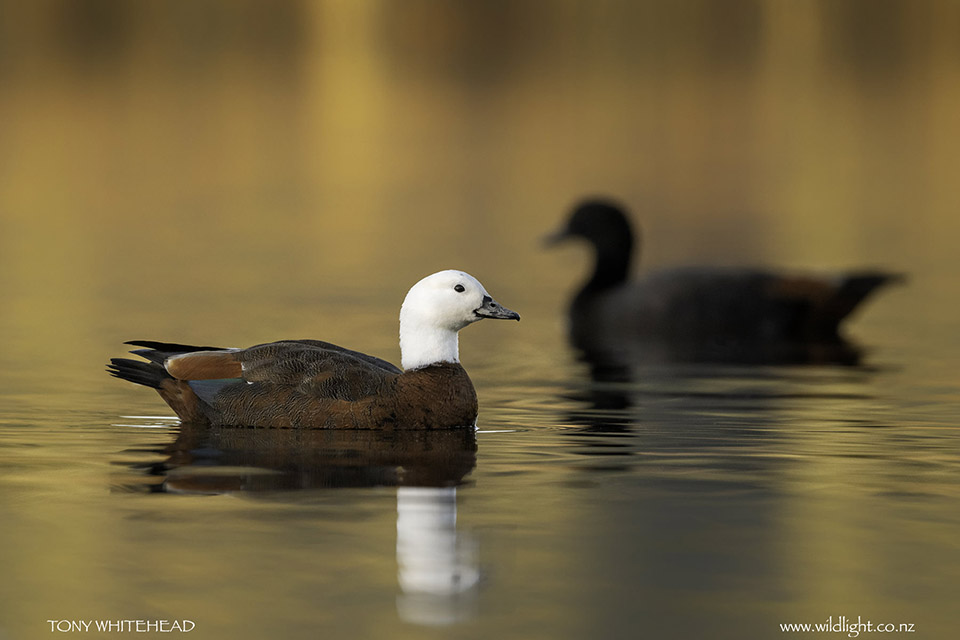
In summary, get as low as you need to to get a close to eye level view of your subject, but keep a close eye on the background and adjust your position to get as clean a background as possible to make your subject pop.
For some more recent images illustrating a low shooting angle see Blue Ducks Again. In upcoming posts I will discuss using a tilting LCD and LiveView as an option for low shooting and outline how to make a groundpod to support a camera at ground level.
Photos with Nikon D850 and Nikon 500mm f5.6PF except Guinea Fowl with Nikon D200 and Nikon 200-400mm f4 (2007 photo) and Mute Swan with Fuji XT3 and Fuji 10-24mm f4OIS lens. The water level swan photos and Coot photo were taken using the angled LCD and live view which is useful to get low without having to lie in water and get a crick in the neck
